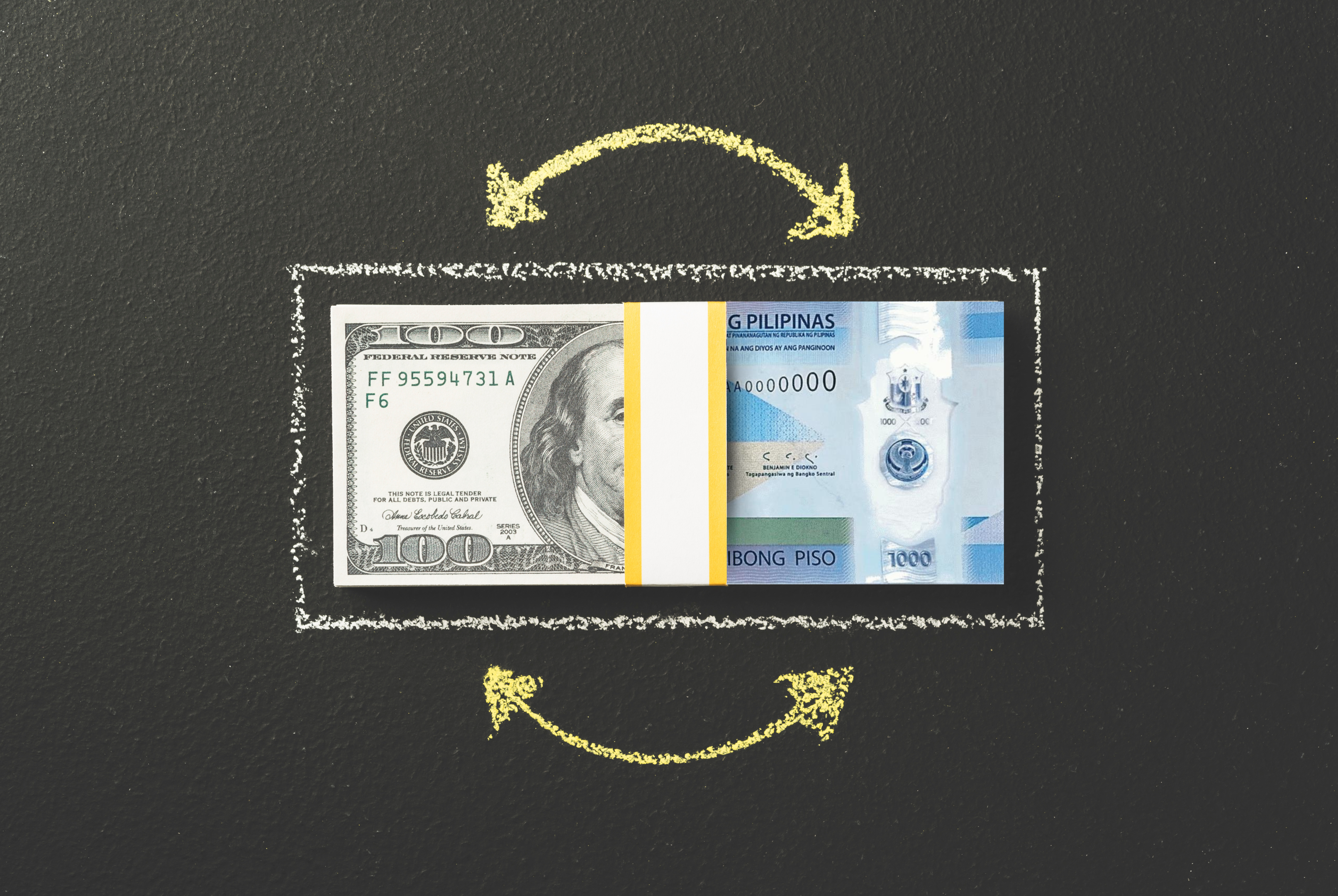
STOCK PHOTO
The Philippine peso could potentially weaken to beyond the record-low 59 level should the Bangko Sentral ng Pilipinas (BSP) decide to ease ahead of the US Federal Reserve, BMI Research said.
In a commentary sent to reporters on Thursday, the unit of the Fitch Group said it is still sticking to its 2024 year-end forecast of 56.50 per dollar, from the current spot rate of 58.70, on expectations that future rate cuts in the US would help buoy the currency.
READ: Markets extend gains, dollar dips as US data fans rate cut hopes
But BMI said uncertainty over the timing of easing by the Fed is expected to bring “much volatility” not just for the peso but also for other emerging market currencies in the next three to six months. At this point, the biggest risk to peso is if the BSP were to cut ahead of the Fed, it added.
“Our forecast hinges on the accuracy of our Fed projection,” the Fitch unit said, adding that it expects the US central bank to loosen monetary policy in September.
“Risks to our currency forecast hinge on the timing of cuts by the BSP. If the Bank were to go ahead with monetary loosening in August, this would exacerbate weakness in the peso, potentially breaching the 59 level we mentioned earlier,” it continued.
Last week, the Monetary Board (MB), the highest policymaking body of the BSP, left the benchmark rate unchanged at 6.5 percent for the sixth straight meeting on expectations that the recent decision to further slash import duties on rice would significantly help ease inflation in the next months.
READ: Inflation is cooling, but more evidence is needed for rate cuts
BSP Governor Eli Remolona Remolona Jr. also struck a more dovish tone and said there’s a chance that the central bank might cut the policy rate by a total of 50 bps this year—with the first 25-bp cut possibly in August and ahead of the Fed.
There are some market watchers who pointed out that the BSP cannot ease ahead of the Fed. This is because the peso may come under pressure if local yields become less attractive to foreign investments seeking high returns while interest rates are still high elsewhere, especially in the US which is considered a safe haven by investors.
A sharp currency slump could risk fanning inflation by making imports more expensive. It can also bloat the peso value of foreign debts held by the government and Philippine companies.
But Remolona was unfazed, arguing that the pass-through effect of a weak peso on inflation “is not very large.” He also said the BSP has ample reserves to prevent sharp volatility of the peso.
For now, BMI said it expects the peso to reverse its losses in the fourth quarter once the Fed begins its monetary loosening cycle in September.
“While it is widely expected that the Fed’s next move will be a cut, markets are uncertain about the timing and extent of policy easing,” BMI said. “Until then, constant fluctuations in market rate expectations will inject another layer of unpredictability into dollar strength, indirectly affecting the peso.”